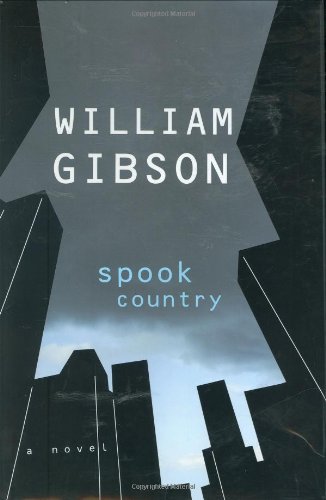
 Spook Country by William Gibson
Spook Country by William Gibson
William Gibson’s Spook Country is set in the same universe as Pattern Recognition, but Hubertus Bigend aside, there is little here that recalls its predecessor. Spook Country is perhaps the weakest entry in Gibson’s Bigend trilogy.
Where Pattern Recognition was told from Cayce Pollard’s point of view, Spook Country is divided between three plotlines that only barely touch each other. Hollis Henry, who was once the lead singer of a rock band, is trying to make it as a journalist, and she has been hired by Hubertus Bigend to look into “locative art” technology. Milgrim is an addict and a translator of Russian. Trained in the Russian martial art systema, Tito delivers files to retired spies on behalf of his uncles.
These characters are caught up in designs that they are only barely able to perceive. This is an America where it’s difficult to find the information that allows people to connect the dots of daily life. Only the rich, the powerful, and the retired spies (spooks) seem to have any idea of what’s being done in America’s name. And one of them isn’t very happy with what he sees.
Spook Country is not a novel that will reward readers looking for a clear and thrilling plot. While Cayce Pollard of Pattern Recognition made for a fascinating protagonist, none of her three successors is fit to fill her “Cayce Pollard Unit” shoes. Readers should instead focus on the subtly paranoid atmosphere that Gibson crafts in the background. And sentence-to-sentence, Gibson’s writing is as sharp as ever.
In the world that Gibson has created in the Bigend series, the citizenry is hopelessly uninformed — and incapable of changing their lot. As such, the most exciting things in Spook Country are restricted, and we only barely glimpse them. It can be frustrating, which is why Spook Country is ultimately a novel for the already converted.






Do it! One of the best things I've read in recent years.
This reminds me. I want to read Addie LaRue.
We’re in total agreement David!
I felt just the same. The prose and character work was excellent. The larger story was unsatisfying, especially compared to…
Hmmm. I think I'll pass.